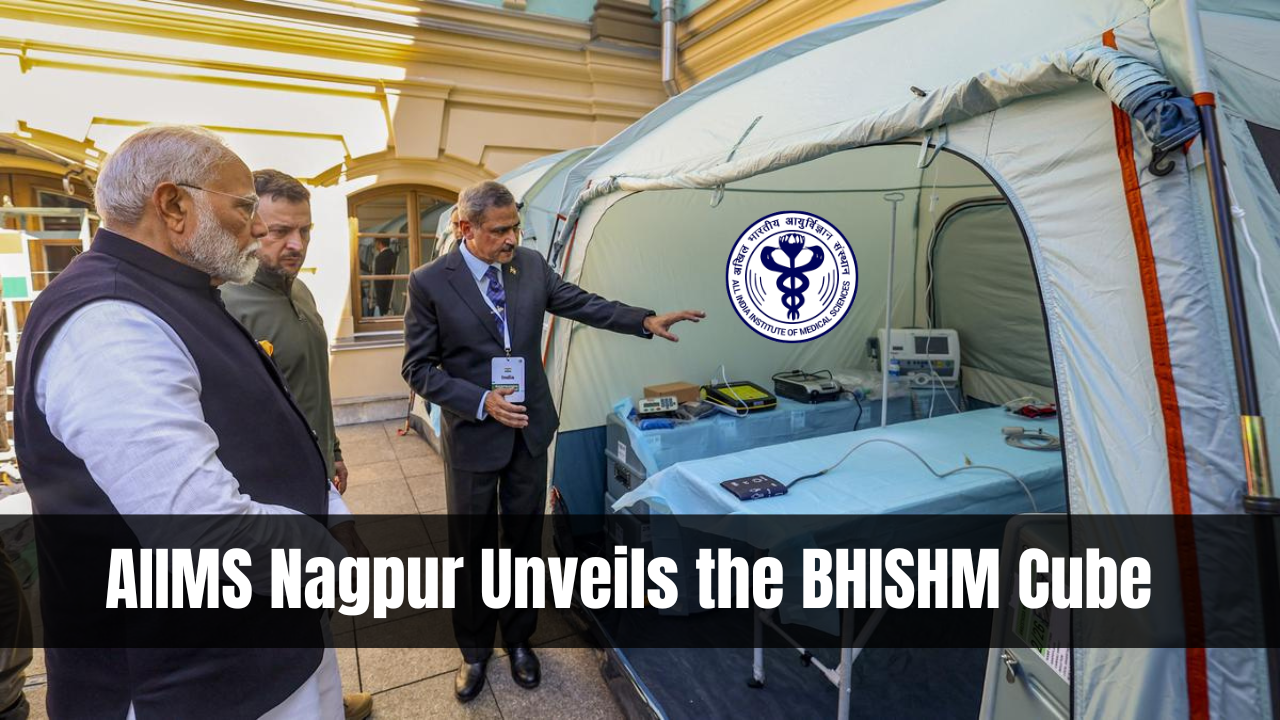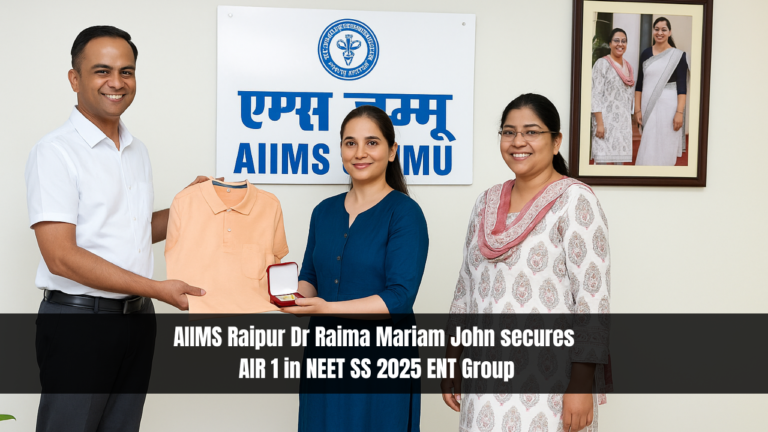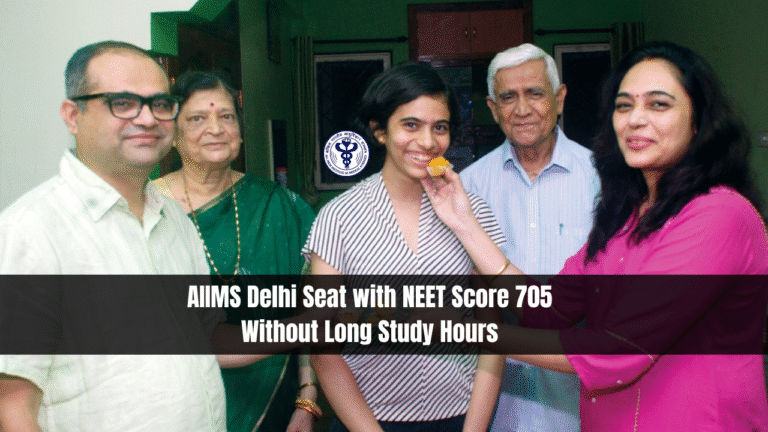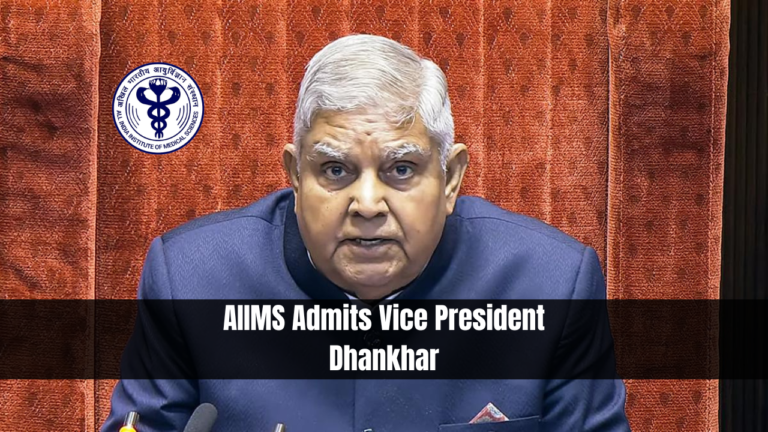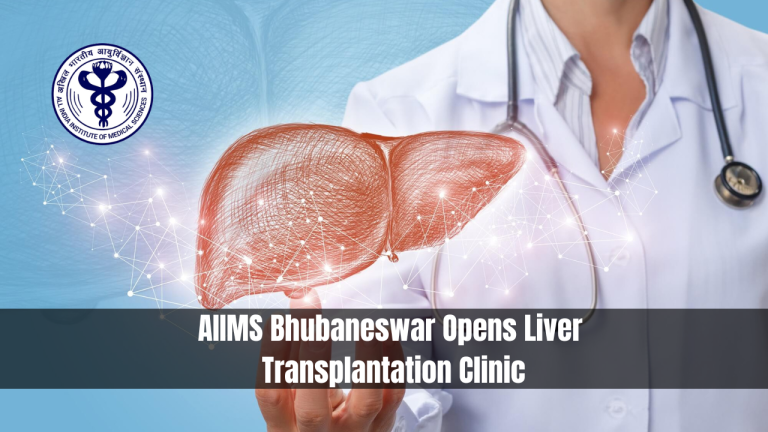AIIMS Nagpur Unveils the BHISHM Cube – Disaster Medical Response Revolutionary
AIIMS Nagpur Unveils the BHISHM Cube. AIIMS Nagpur introduced the BHISHM Cube (Bharat Health Initiative for Sahyog, Hita, and Maitri) System, a state-of-the-art mobile medical unit designed to offer rapid medical assistance during disasters. This revolutionary system, presented at a workshop attended by health officials, emergency responders, and medical students, marks a significant milestone in India’s disaster management and medical response capabilities.
Read Also: AIIMS Online Appointment
What is The BHISHM Cube?
The BHISHM Cube is an innovative, compact medical unit engineered for swift deployment in disaster-stricken areas. It consists of a sturdy frame housing 72 mini-aluminium cubes, each filled with essential medical supplies such as life-saving medicines, surgical instruments, IV fluids, and water-resistant tents. The system is capable of being deployed quickly through various methods, including air drops via helicopters or aircraft and even parachute drops, making it highly efficient in reaching affected areas without delay.
A single BHISHM Cube is composed of two Mother Cubes, which are further made up of 36 mini cubes each. This compact yet powerful system ensures that critical medical supplies are available on the ground within moments of an emergency.
Key Features of The BHISHM Cube System
- Capacity:
- The BHISHM Cube has the capacity to treat approximately 200 patients in a single operation.
- It is designed to perform 10-15 basic surgeries daily, offering essential medical care during high-stress, high-demand situations.
- Portability and Weight:
- Each mini cube weighs approximately 20 kg, which is light enough to be carried by a single individual, enabling easy handling and rapid deployment in crisis zones.
- Transport and Deployment:
- The BHISHM Cube is highly versatile, capable of being deployed across various terrains and through different transport methods, including air, land, sea, and even drones. This flexibility ensures that it can reach areas that are otherwise difficult to access during disasters.
- Tech Edge:
- A cutting-edge feature of the BHISHM Cube is the inclusion of RFID tracking and a real-time inventory management system. This ensures that all medical supplies are tracked efficiently, making it easier for field staff to access what they need without delay.
- Furthermore, the system is equipped with specialized software on a tablet, available in 180 languages, to assist users in navigating the system and providing guidance in emergency situations.
- Self-Sufficiency:
- To support its operations in remote or underdeveloped areas, the BHISHM Cube is designed to be self-sufficient, capable of generating power and providing oxygen for limited periods, ensuring that it can function without the need for external infrastructure.
Commitment to Swift Action
During the event, Dr. Prashant P Joshi, the Executive Director and CEO of AIIMS Nagpur, emphasized the importance of the BHISHM Cube as a testament to India’s commitment to disaster preparedness and the swift delivery of life-saving medical aid. “Bhishm represents India’s dedication to ensuring the rapid, efficient treatment of patients during emergencies. The system is designed to act quickly, saving as many lives as possible,” said Dr. Joshi.
The demonstration, led by Air Vice Marshal (Retd.) Dr. Tanmay Roy, showcased how the BHISHM Cube could be transformed into a functional field hospital in minutes. With the RFID-enabled inventory tracking and app-guided operations, the BHISHM Cube ensures that even in the chaos of disaster situations, medical personnel can access everything they need to save lives effectively.
Step Toward Global Humanitarian Aid
The BHISHM Cube is not just a national asset but also a part of India’s broader humanitarian mission to offer medical assistance to countries in need during natural or man-made disasters. Under Project Aarogya Maitri, the BHISHM Cube is being designed not only for domestic use but also to support international humanitarian efforts, especially in developing nations.
The Bhishm Cube also plays a pivotal role in disaster management in Maharashtra, where teams are being trained to deploy the system rapidly in the event of an emergency. Dr. Mahendra Chauhan, the Head of Trauma and Emergency at AIIMS Nagpur, stated, “Our goal is to train teams who can deploy these cubes swiftly and efficiently when disaster strikes, ensuring that emergency medical care reaches those in need without delay.”
Conclusion
With the introduction of the BHISHM Cube, India is taking a giant leap forward in the realm of disaster medical response. This system offers a beacon of hope in crisis situations, ensuring that timely medical assistance reaches the affected areas, and lives are saved. The integration of cutting-edge technology with mobile medical units demonstrates India’s proactive approach to improving disaster preparedness and ensuring efficient emergency medical care. With the BHISHM Cube, India is set to become a leader in disaster response, both at home and globally.

